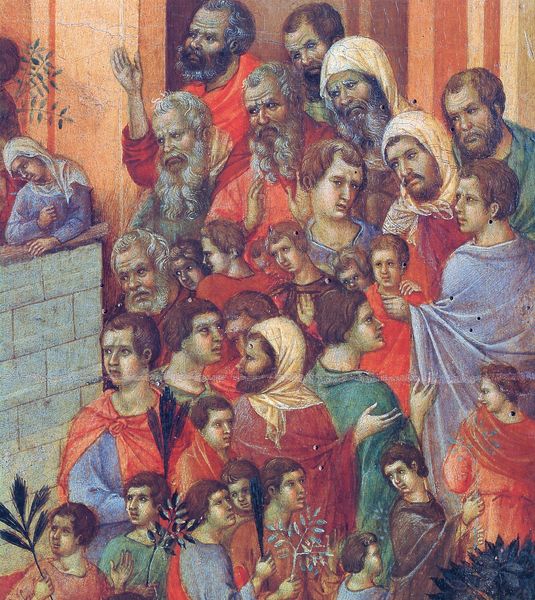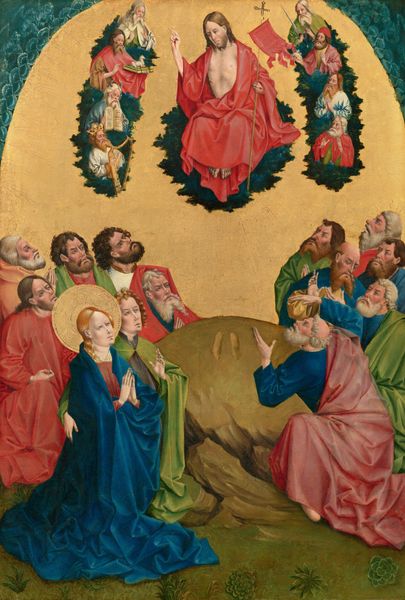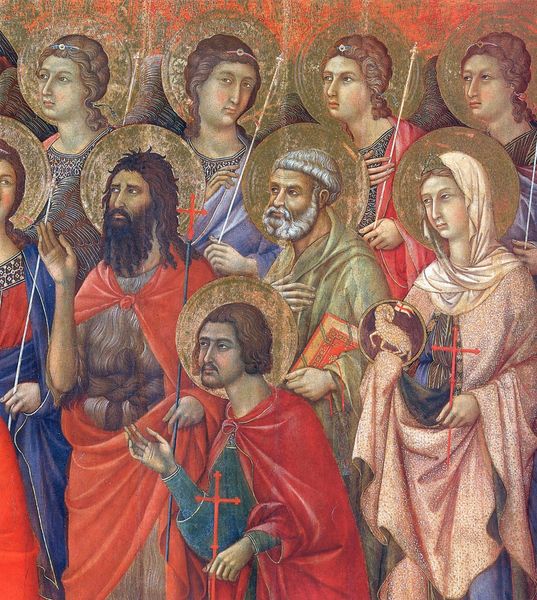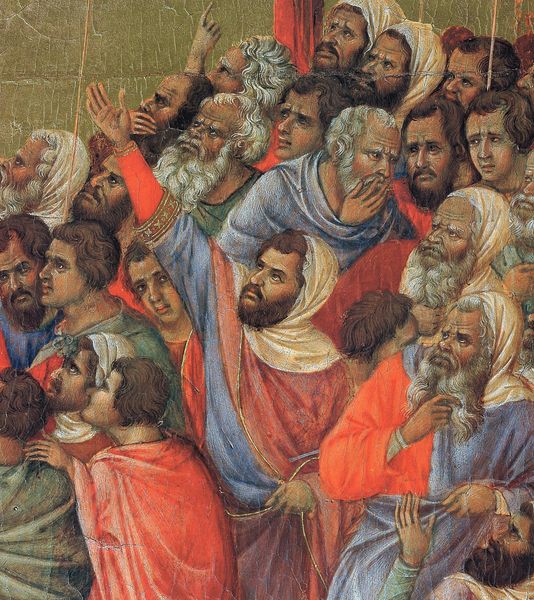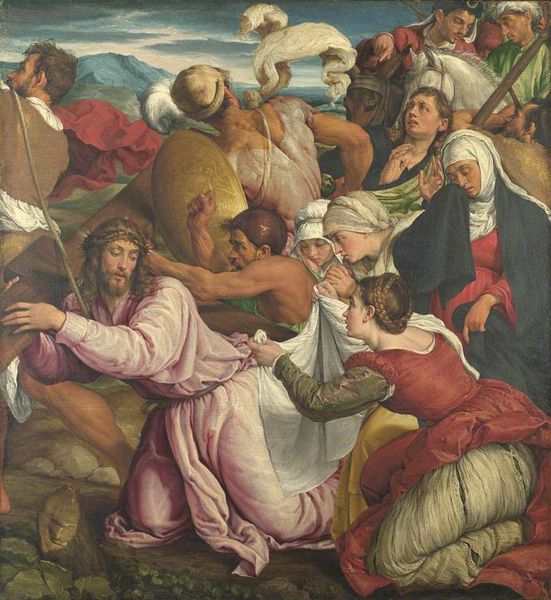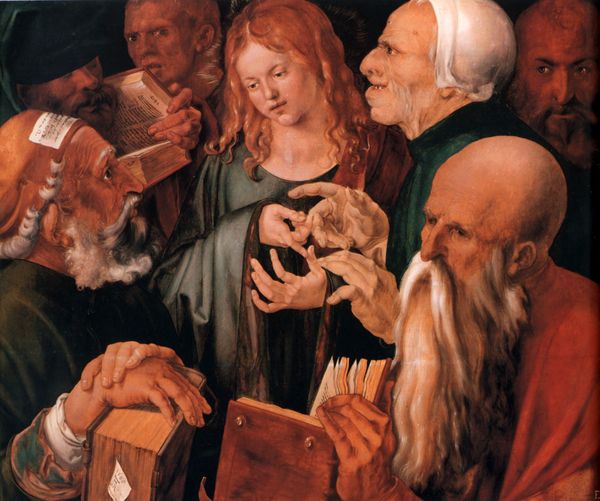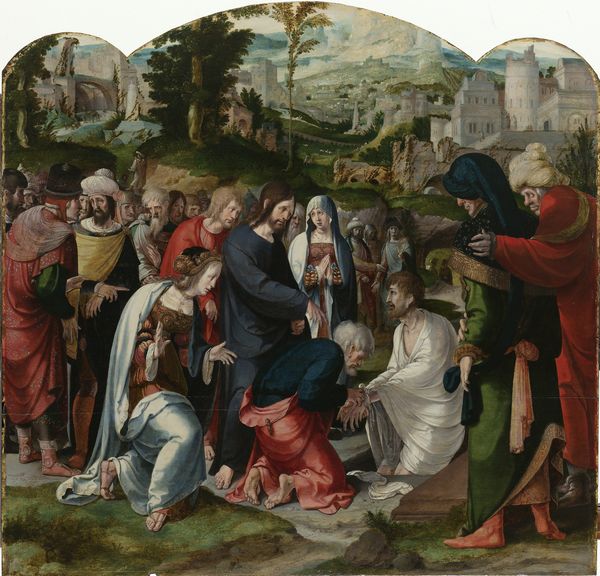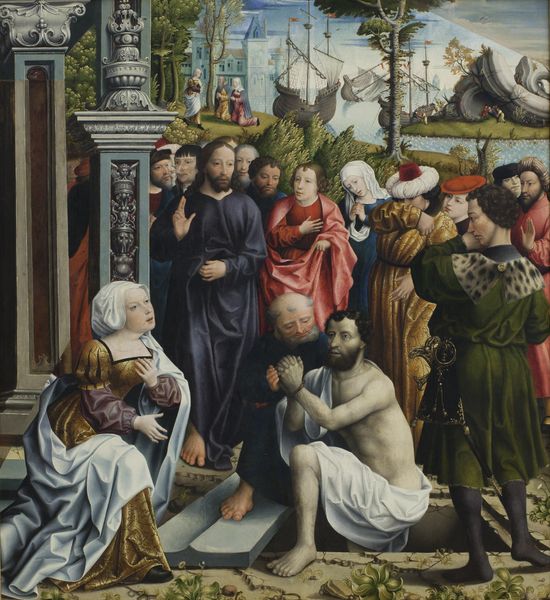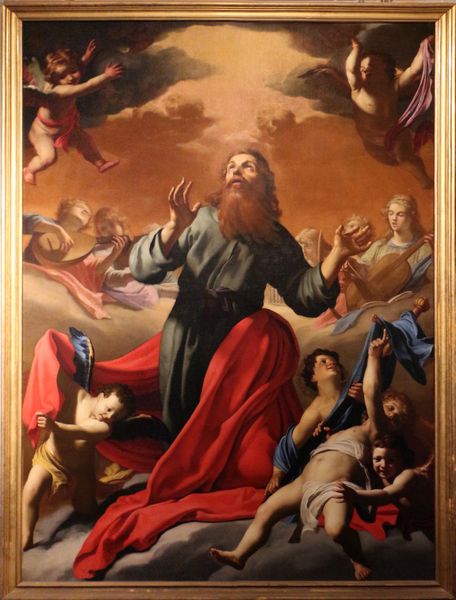
painting, oil-paint
#
portrait
#
narrative-art
#
painting
#
oil-paint
#
figuration
#
oil painting
#
child
#
group-portraits
#
naive art
#
christianity
#
academic-art
#
italian-renaissance
#
early-renaissance
#
virgin-mary
Copyright: Public domain
Curator: Looking at this detail from Filippo Lippi's "Adoration of the Magi" currently housed in the National Gallery of Art in Washington, D.C., I’m struck by the vibrant chaos of it all. What catches your eye? Editor: It's definitely a crowd scene, isn't it? A dense layering of faces and figures that gives me a feeling of being overwhelmed, yet there's a real energy there too, almost festive despite the somber religious subject matter. Curator: Yes, and Lippi is so interesting in the way he integrates the sacred with the everyday. The scene, though biblical, feels so grounded in its time. Note the clothing styles, for instance. This portrayal definitely carries emotional resonance rooted in cultural memory. Editor: Absolutely. And it reflects a clear move away from purely symbolic representation towards a more humanistic depiction of religious figures. He’s essentially updating the visual language for his contemporary audience. Look how the patrons likely demanded their inclusion into this holy narrative. This trend shapes Early Renaissance artwork so influentially. Curator: I find the repetition of faces, and their relative expressions particularly compelling, creating this echoing of cultural archetypes and aspirations of Renaissance society, with certain character representations being almost copies, which brings in to the subject the artist's inner landscape. What do you make of this "cultural archetyping" Editor: That artistic intention could very well be the case. This cultural repetition suggests an interesting intersection of tradition, the patrons wanting to identify themselves with Biblical people from such traditional and canonical scenes, along with their aspirations towards both spiritual purity and social prominence. Curator: Indeed, art here acts not merely as an illustration but a historical document—testament to social mobility—for its original audience and for future generations. Editor: It really showcases art's amazing ability to hold up a mirror to its society. Thanks to these great artists and historians like you, we can still examine that reflection so acutely even after centuries. Curator: A rewarding intersection, wouldn't you agree, of symbol, artistry, and socio-historical reflection, encapsulated within a single brushstroke? Editor: Agreed. It leaves one with a profound appreciation for art's multilayered capacity to communicate across time.
Comments
No comments
Be the first to comment and join the conversation on the ultimate creative platform.
